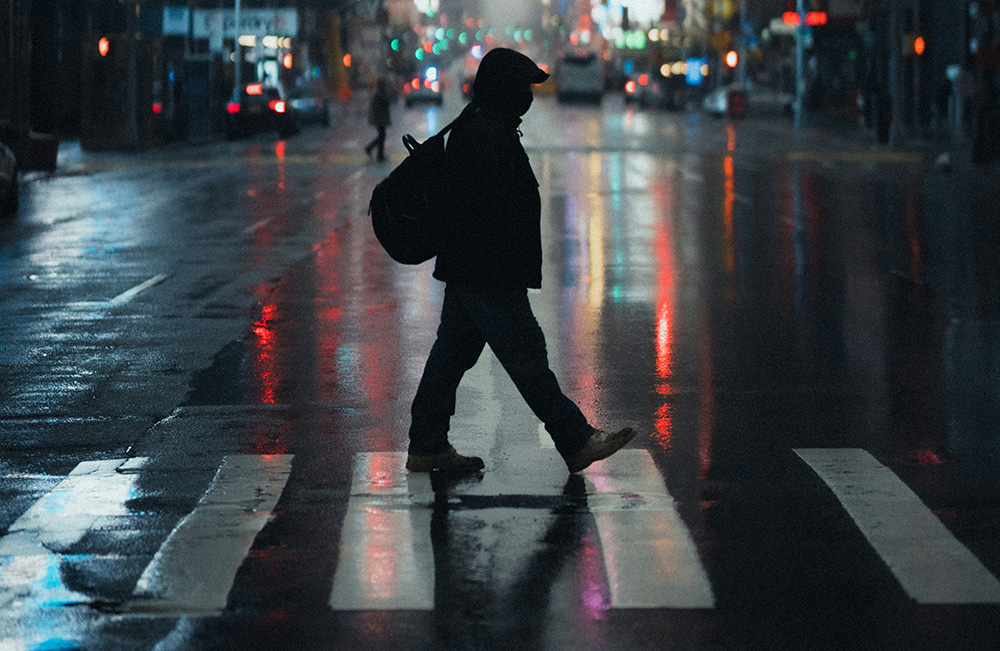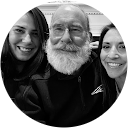
Bicycling has long been popular as a recreational activity, a form of exercise, and a way to commute to work. Cities and towns across Connecticut have increasingly been working to encourage bicycling as well, taking steps such as establishing bike lanes.
Unfortunately, bicycle accidents are still a common occurrence. Cyclists often have to contend with negligent drivers whose actions can cause serious injuries. According to the Centers for Disease Control and Prevention, nearly 1,000 cyclists are killed and 130,000 injured on roads in the United States each year.
Many people also have negative perceptions of cyclists, and this bias can limit your chances of success in a personal injury suit. However, developing a strong claim can establish a defendant’s negligence and get you the compensation you deserve.
Bicycle accidents and liability
Cyclists have less protection than motor vehicle drivers in an accident, and may suffer serious injuries such as broken bones and traumatic brain injuries when they are involved in a collision. There are many circumstances where a driver can be held liable for a cyclist’s injuries due to negligent actions, including:
- Turning into the path of a cyclist who has the right of way
- Failing to yield to a cyclist at an intersection or crosswalk
- Opening a vehicle door into the path of a cyclist
- Making a lane change without checking their blind spot
- Failing to use a turn signal
- Speeding
- Distracted driving
- Driving under the influence of alcohol and/or drugs
- Driving aggressively
In some accidents, a party other than a driver may also be held responsible. Poorly maintained roads or cycling infrastructure can cause a cyclist to lose control or crash, as can faulty bicycle products or repairs.
Common biases against cyclists
There is a phenomenon known as “windshield bias” where people tend to consider the accident from the driver’s perspective. In bicycle accidents, this means that several important parties — from the police who investigate the accident to the jury considering a personal injury claim — are more likely to make assumptions about what the driver could have reasonably seen, excuse the driver’s actions, and attribute blame to the cyclist.
Studies have also shown that many people hold broader biases against cyclists, especially if they do not take part in the activity themselves. Similar to motorcycle bias, people may have preconceived notions about the character and behavior of cyclists, making them more likely to believe that cyclists are at fault in an accident.
Examples of bicycle bias include:
- Assuming cyclists regularly disregard traffic laws: Perhaps the most common reason people are biased against cyclists is that they have witnessed a cyclist zipping through a stop sign, weaving between cars, or otherwise riding recklessly. Based on these observations, they assume that all cyclists ride in a similar manner.
- Believing that cyclists are less skilled than drivers: Cyclists must follow certain rules of the road designed to keep them safe. However, people often believe that cyclists are more likely than drivers to make errors that can cause an accident, such as unexpectedly cutting across a street.
- General disdain for cyclists: People may hold grievances about cyclists, such as irritation about having to share the road with them.
- Lack of understanding of bicycle laws: While cyclists are permitted to share the road with drivers, not everyone is aware of this fact. Some may believe (or simply hold the opinion) that cyclists should not be allowed on the road.
- Believing that bicycling is an inherently risky behavior: Cyclists have fewer safety protections than motorists, and people may believe that they accept more risk when they ride. This bias overlooks the fact that drivers still owe a duty of care to be careful to avoid causing injuries to others, including cyclists.
How bicycle bias can affect a personal injury claim
Bicycle bias can undermine a personal injury claim in a variety of ways. The police investigating the accident may focus more on the cyclist’s actions than a negligent driver’s, or neglect other factors such as the condition of the road at the time of the accident. Healthcare professionals may downplay the severity of a cyclist’s injuries. A judge or jury may be biased against the cyclist, either consciously or unconsciously, when a claim goes to court.
Defense arguments often build on these biases by arguing that a cyclist was reckless, not following traffic rules, or otherwise acting irresponsibly. This can help convince a judge or jury that the cyclist’s testimony is less credible than the driver’s, limiting a cyclist’s chances of prevailing in court.
How to counter bicycle bias
A strong claim is essential for pushing back against bicycle bias in court. This can help overcome any assumptions about the cyclist’s behavior and prove that fault rests with another party.
A personal injury attorney can help you build a strong personal injury claim after a bicycle accident by:
- Collecting evidence: A thorough documentation of the accident scene will include evidence such as road conditions, the location of any road signs and traffic signals, witness statements, and any surveillance or dashcam footage that captured the accident.
- Gathering medical records: Records outlining the medical attention you received after the accident, including ongoing treatments such as physical therapy, help quantify the financial impact on your life.
- Directly confronting biases: Even if they believe they will give your claim a fair hearing, a judge or juror could be unconsciously biased against cyclists. An attorney can raise this issue and confront it directly, at the time of selecting a jury and during evidence such as testimony from investigating officers, the negligent driver or others who can attest to your safe cycling habits.
Let’s review your case
If you were injured in a bicycle accident, contact the attorneys at Anderson Trial Lawyers today for a free consultation to discuss your claim. Fill out our online contact form or call us at 860.886.8845.

There has been an evident increase in accidents involving pedestrians in recent years, and these incidents often result in serious injuries. The Governors Highway Safety Association recently found that pedestrian fatalities reached a 41-year high of more than 7,500 in 2023, including 62 people killed in Connecticut. One has to think that the rise in distracted driving has played a major factor in this increase.
Pedestrians can receive compensation through insurance or workers’ compensation claims after an accident, but they are often insufficient to cover the full costs inflicted by an accident. Hiring a personal injury attorney can help you get fair compensation from both the insurance companies and those responsible for your injuries.
Causes of accidents involving pedestrians
Pedestrians can be injured in many unexpected ways, including slipping and falling on an unsafe sidewalk, falling materials at a construction site, or a collision with a bicyclist, scooter, or skateboarder. Pedestrians have even filed claims against other pedestrians who ran into them while distracted.
For this article, we’re focusing on motor vehicle accidents, which are the most common type of accident involving pedestrians and the most likely to cause serious injuries. Accidents can occur when:
- A vehicle hits a pedestrian crossing the street, either in a marked crosswalk or outside of one
- A vehicle goes around a turn and strikes a pedestrian
- One driver stops for a pedestrian, who is then struck by a driver going around them or passing in a separate lane
- A pedestrian walks in front of a vehicle as it is backing up
- A driver’s vision is blocked by hedges, walls, street signs or other obstructions
- A pedestrian is struck in a parking lot
- A driver does not see a pedestrian due to low visibility conditions, such as darkness or fog
- A driver loses control, leaves the roadway, and strikes a pedestrian
- Distracted driving
In some cases, a third party may share some of the blame or even be primarily responsible for the accident. This can occur when issues like poor road design, inadequate signage, or faulty vehicle parts contribute to an accident.
Finding evidence to support your claim
To prevail in a personal injury claim, a plaintiff has to put together strong evidence to uphold their version of events and show that a defendant’s actions were negligent. There are several pieces of evidence that can be used in a claim, including:
- A police report: Includes helpful information such as witness statements, measurements, photographs, dashcam video and a preliminary assessment of fault.
- Witness statements: Help corroborate your version of events. Ideally as close to the accident as possible, when they have a strong recollection of the accident.
- Medical records: Show the mechanism of injury in pedestrian cases through a diagnosis of your injuries, the treatments necessary for your recovery, and the costs you have paid for medical care.
- Photographs: Document the accident scene, including pictures of injuries, damage to the vehicle involved, and other relevant features such as road conditions and signs.
- Video footage: Captures footage of the accident or a driver’s actions before the accident, as well as at the scene after an accident. Video evidence can include surveillance footage from nearby homes and businesses as well as dashcam footage from law enforcement.
- Experts: Expert witnesses can include accident reconstruction specialists, investigators, civil engineers, code experts, and others. In addition, forensic accountants determine the impact of the accident on a plaintiff’s earning capacity.
- Driver record: Can strengthen claims of driver negligence by highlighting past traffic violations.
- Cell phone records: Can help prove that a driver was distracted at the time of the accident.
Negligence factors
Motorists have a duty of care to drive safely and follow traffic laws for their safety as well as the safety of anyone else using the road. If a driver behaves irresponsibly and this behavior causes them to hit a pedestrian, they can be found negligent and held liable for a pedestrian’s injuries. Examples of driver negligence include:
- Failing to yield: Drivers in Connecticut must yield to pedestrians in a crosswalk, and for safety reasons they must also give way to anyone crossing the street — even if not in a crosswalk. A recent Connecticut law also states that drivers must yield to pedestrians who make a visible signal that they are about to cross the street.
- Speeding: Drivers who are traveling at an unsafe speed are less capable of stopping or avoiding pedestrians properly using the roadway.
- Distracted driving: Drivers may not see a pedestrian in time if they are texting, talking on a phone, using an in-vehicle entertainment system, or otherwise distracted.
- Driving under the influence: If a driver is intoxicated, they will be less aware of their surroundings and have a slower reaction time.
- Disobeying traffic signals: Drivers may collide with a pedestrian if they go through a red light or stop sign
- Reckless driving: Any driver behavior that is aggressive or unsafe can cause them to collide with a pedestrian
Compensatory and punitive damages
Pedestrians who are injured by a negligent driver can seek compensatory damages. Depending on the circumstances of the accident, they may also be able to seek punitive damages.
Compensatory damages take into account both economic and non-economic losses resulting from the accident. Economic losses cover things like medical bills, lost wages, and personal property damaged or destroyed in the accident. The court may also determine that the plaintiff is entitled to additional damages for indirect, non-economic losses such as pain and suffering or the loss of enjoyment of life.
Punitive damages may be awarded in claims where the defendant’s behavior is reckless. These damages are meant to punish the defendant for their actions and deter similar behavior in the future.
In motor vehicle accidents where a pedestrian is injured, punitive damages may be awarded for particularly egregious conduct, such as when a driver intentionally hits a pedestrian, flees the scene after the accident, hits a pedestrian while street racing, or drives distracted.
What if I was partially at fault?
Pedestrians also have a duty of care when using a sidewalk or roadway and are expected to act in a safe, predictable manner. In some circumstances, it may be determined that a pedestrian’s behavior contributed to the accident, including:
- Jaywalking, walking against a “Don’t Walk” signal, or failing to use a crosswalk
- Not following the rules of the road, including expectations that pedestrians will use a sidewalk when available, walk on the left side of the road, and yield to emergency vehicles with flashing lights or sirens.
- Acting in a way that a driver cannot anticipate, such as darting in front of a vehicle or entering the street from between two vehicles
- Walking while distracted, intoxicated, or under the influence of drugs
- Walking in a prohibited area, such as on the shoulder of a freeway
- Failing to take proper precautions when walking at night, such as wearing reflective clothing or carrying a flashlight.
Connecticut has a modified comparative negligence statute, which can hold a plaintiff partially responsible in an accident and reduce their compensation accordingly. However, it is still possible to recover damages as long as the court finds that you weren’t more than 50 percent responsible for the accident.
Let’s review your case
If you or a loved one were injured in a pedestrian accident, call Anderson Trial Lawyers at 860.886.8845. We’ll set up a free consultation to discuss your case and the intricacies of pursuing a claim when injured as a pedestrian.







